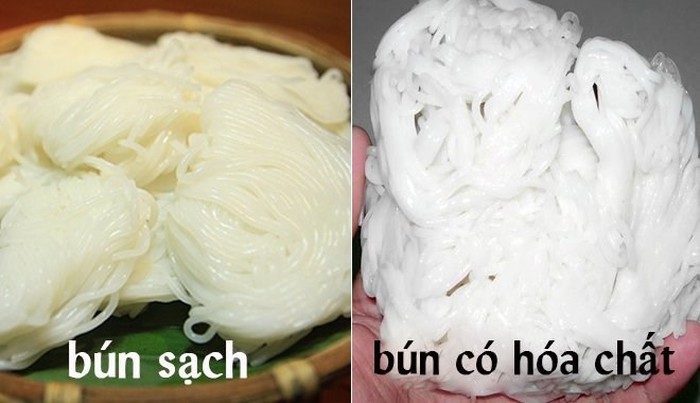Elasticity of Rice Noodles
There are numerous rice noodle vendors in the market. However, it is not easy to choose rice noodles that do not contain bleaching agents or toxic chemicals. If you see rice noodles that look slightly crushed, brittle, and feel soft, sticky, and flexible, then they are likely made from pure rice.
On the other hand, rice noodles containing toxic chemicals will be chewier and more resilient. If they feel unusually soft and smooth to the touch, it is best to avoid them. Consuming these noodles can cause stomach discomfort, and prolonged intake may impact your health.
Tasting the Noodles
Rice noodles made without toxic chemicals will have a pleasant rice aroma, a chewy texture, and a delightful taste. However, noodles containing chemicals will taste tarter than usual, and even after 2-3 days, they will not spoil due to the excessive amount of bleaching agents or toxic chemicals used.

Consuming these noodles can lead to digestive issues and food poisoning, posing a severe risk to one’s health and well-being.
Color of the Noodles
When choosing clean rice noodles, apart from considering their elasticity, one should also observe their color. Pure rice noodles usually have an opaque white color, less vibrant than those treated with bleaching agents.
If you come across rice noodles that are stark white, plump, and shiny, be cautious as they may contain harmful substances.
Scent of the Noodles
If you detect a mild tangy scent, it is a good sign, as this indicates the presence of soaked rice, the primary ingredient for making pure rice noodles. However, if the noodles contain bleaching agents or toxic chemicals, they will lack this characteristic aroma.
Additionally, these chemically treated noodles will not develop a sour smell even if left for several days, which is a sign of their harmful nature.
According to Khoevadep



































